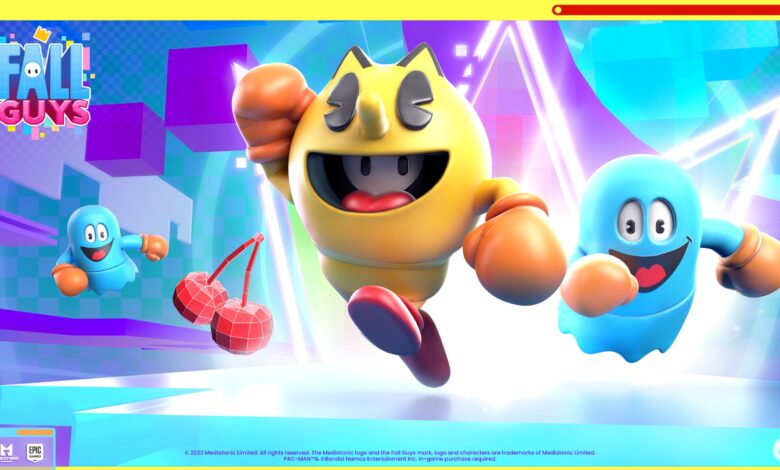Pac-Man: Navigating Through the Maze of Gaming History

Pac-Man, the iconic yellow character navigating through a maze filled with dots and ghosts, holds a special place in the hearts of gamers worldwide. Since its inception in the early 1980s, Pac-Man has become a cultural phenomenon, transcending generations and leaving an indelible mark on the gaming industry. In this comprehensive guide, we embark on a journey through the captivating history, gameplay mechanics, cultural impact, and enduring legacy of Pac-Man.
The Birth of Pac-Man
The story of Pac-Man’s creation is one of innovation and serendipity. In 1979, Japanese video game designer Toru Iwatani set out to create a game that would appeal to a broader audience beyond the predominantly male demographic of arcade gamers at the time. Drawing inspiration from the concept of eating, Iwatani conceived the idea of a character devouring dots in a maze while being pursued by colorful ghosts. Thus, Pac-Man was born.
Despite initial skepticism from Namco, the company behind Pac-Man’s development, the game was released in 1980 to immediate success. Its simple yet addictive gameplay mechanics, coupled with vibrant visuals and catchy sound effects, captured the imaginations of players around the world. Pac-Man quickly became a cultural phenomenon, spawning a slew of merchandise, spin-offs, and even a hit song, “Pac-Man Fever” by Buckner & Garcia.
Gameplay Mechanics
At its core, Pac-Man is a game of strategy and reflexes. Players control the titular character as they navigate through a maze, consuming all the dots while avoiding the ghosts that roam the corridors. Each ghost has its own unique behavior, adding layers of complexity to the gameplay. The player can also collect power pellets, which temporarily turn the ghosts blue and vulnerable to being eaten by Pac-Man.
The maze itself is intricately designed, with winding corridors and hidden passages that players must navigate to clear each level. As the game progresses, the speed and difficulty increase, challenging players to hone their skills and devise new strategies for survival. Pac-Man’s timeless appeal lies in its accessibility and replay value, making it a favorite among casual and hardcore gamers alike.
The Rise of Pac-Man Fever
Pac-Man’s success in the arcade paved the way for a cultural phenomenon known as “Pac-Man Fever.” The game’s popularity transcended the confines of arcades, permeating mainstream culture in unprecedented ways. From merchandise and apparel to television shows and music videos, Pac-Man was everywhere in the early 1980s.
The release of “Pac-Man Fever” in 1982 further solidified Pac-Man’s place in pop culture. The song, which reached number nine on the Billboard Hot 100 chart, immortalized the game in the annals of music history. Its catchy lyrics and infectious beat captured the essence of the Pac-Man craze, serving as an anthem for a generation of gamers.
Evolution and Adaptation
As gaming technology advanced, Pac-Man evolved with the times, adapting to new platforms and audiences. In the 1980s, the game was ported to home gaming systems such as the Atari 2600 and the Nintendo Entertainment System (NES), introducing Pac-Man to a whole new generation of players.
In the decades that followed, Pac-Man continued to innovate and expand its reach. Sequels and spin-offs were released across a variety of platforms, including consoles, handheld devices, and mobile phones. From the maze-chasing antics of Ms. Pac-Man to the multiplayer mayhem of Pac-Man Battle Royale, the franchise remained relevant by embracing new technologies and gameplay mechanics.
Revivals and Remasters
Despite being over four decades old, Pac-Man remains as popular as ever thanks to a series of revivals and remasters. In recent years, the game has been remastered in high definition for modern gaming platforms, allowing players to experience the classic gameplay with enhanced graphics and sound.
Pac-Man’s resurgence in the digital age has also led to a proliferation of mobile games and online communities dedicated to the iconic character. From endless runners to puzzle games, there is no shortage of ways to play Pac-Man on smartphones and tablets. Additionally, online platforms such as Twitch and YouTube have breathed new life into the competitive gaming scene, with players streaming their Pac-Man prowess to audiences around the world.
Beyond the Screen: Pac-Man in Real Life
Pac-Man’s influence extends beyond the realm of video games, manifesting in real-life events and installations. Each year, gaming enthusiasts gather from far and wide to compete in the Pac-Man World Championships, showcasing their skills in a battle for arcade supremacy. These events serve as a testament to Pac-Man’s enduring legacy and the passion it inspires among fans.
Furthermore, Pac-Man’s iconic imagery has been immortalized in art installations and public spaces around the world. From giant mazes to interactive sculptures, artists have found creative ways to pay homage to the beloved character. These installations not only celebrate Pac-Man’s cultural significance but also bring joy to communities and spark conversations about the intersection of art and gaming.
The Enduring Legacy
As we reflect on Pac-Man’s storied history, it becomes clear that its legacy is more than just a game—it’s a cultural touchstone that continues to resonate with people of all ages. From its humble beginnings in the arcades of the 1980s to its status as a global icon in the 21st century, Pac-Man has left an indelible mark on popular culture and the gaming industry as a whole.
But perhaps Pac-Man’s greatest legacy lies in the memories it has created for millions of players around the world. Whether it’s the thrill of clearing a maze or the satisfaction of setting a new high score, Pac-Man has brought joy and excitement to countless lives over the past four decades. And as long as there are gamers eager to test their skills and chase that elusive perfect game, Pac-Man will continue to reign supreme as the king of the arcade.
Conclusion
In conclusion, Pac-Man’s journey from arcade sensation to cultural icon is a testament to the power of video games to capture our imaginations and bring people together. From its humble beginnings in the early 1980s to its continued relevance in the digital age, Pac-Man has transcended generations and left an indelible mark on popular culture.
As we celebrate Pac-Man’s enduring legacy, let us not forget the countless hours of joy and excitement it has brought to players around the world. Whether you’re a seasoned veteran or a newcomer to the world of gaming, there’s something timeless and universal about the simple joy of guiding Pac-Man through a maze, gobbling up dots and evading ghosts along the way.
You read also more





